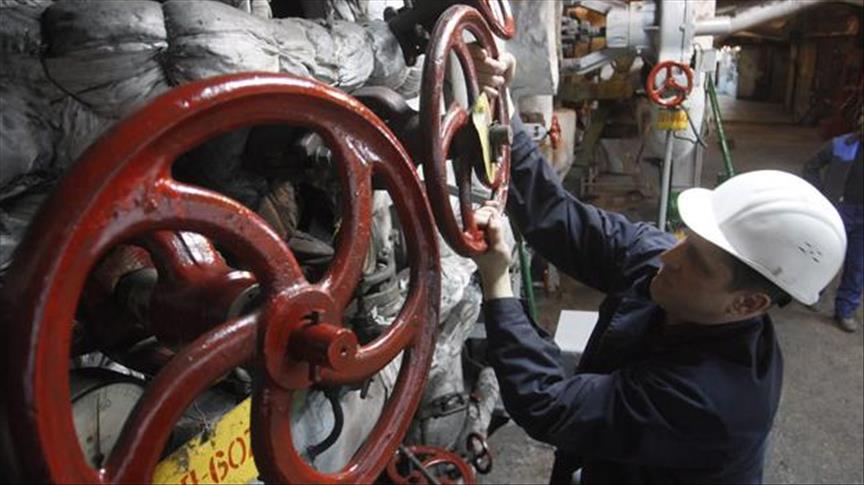- The Writer holds an MSc in Eurasian Political Economy & Energy from King’s College London and also an MA in European Studies from Sabancı University.
Ukraine’s gas market, once known as one of the largest in Europe, is transitioning away from overdependence on Russian imports to closer integration with the European gas market. Despite the difficulties involved, ranging from a volatile political and economic environment to large-scale protests, coupled with ongoing military conflict and the annexation of Crimea, the state-owned national oil and gas company Naftogaz stated in an open letter that the company has stopped importing gas from Russia as of 2016. This has been supported by a web link that counts the number of days without importing natural gas.
Russia’s decision to cut off gas supplies to Ukraine in mid-2006, 2009, and for the third time in 2015 paved the way for the real necessity to change the gas market structure in Ukraine. While Russia has paid the utmost attention in diversifying its gas transit structure away from Ukraine, which became evident in the Nord Stream and Turk Stream projects, Ukraine, on the other hand, has made every effort to minimize its over-reliance on Russian natural gas.
Ukraine’s new set of arrangements varying from regulation to pricing has been implemented to wean itself off Russian influence. Furthermore, a steep decline in the total gas consumption over the years has helped Ukraine reduce its gas imports from Russia.
Natural gas consumption dropped by more than half since 2006, from 75 billion cubic meters () in 2006 to 60 in 2010, and to 33 in 2015. A slight drop of 0.6 followed this in 2016. This rapid downward trajectory in gas consumption is mainly attributed to the level of economic activity. Economic hardship experienced since 1990’s further escalated in 2010 after the confrontation with Russia. Following this, the Ukrainian economy contracted by a further 6 percent in 2014 and approximately by 10 percent in 2015, further deteriorating the fragile economy.
While industrial production was hit the hardest during the conflict period, commodity prices increased over the years. Only in 2016 did Ukraine GDP increase just above 1 percent. Although it appears that the economic downturn has subsided, the economic recovery does not appear to be happening as swiftly as expected.
Other reasons behind the decline in gas since 2010 apart from the economic recession include pricing reform, limited energy savings and the introduction of energy efficiency to diminish gas consumption. To meet domestic demand, Ukraine both used its own production and greatly benefited from reserve flows. Additionally, 25 percent of the overall drop in natural gas consumption in Ukraine between 2013 and 2015 occurred mainly due to political tension in the conflict zone in the East. Given that the Eastern region of Ukraine was the largest gas consumer for many years, accounting for 36 percent of total gas consumption in 2015, after the deteriorating political escalation in the region, gas consumption severely decreased. Only in the cities of Donetsk and Luhansk did gas consumption slash by 80 percent and 61 percent, respectively.
Principally, Ukraine has met from its own domestic gas production, which reached as much as 20.1 in 2016. With the aim of initiating competition in pricing against Russia, Ukraine has started a reverse flow from Slovakia, Hungary Poland. In 2015, the EU met approximately 28 percent of Ukraine’s gas consumption. Natural gas imports from the EU increased from zero to 5.07bcm in 2014 and to 10.3 in 2016, reaching 11.07 at the end of 2016.
Seemingly, Ukraine chose reverse flow to wean itself off Russian gas imports and also to push down gas prices. However, to get through the calendar year 2016 without gas import from Russia, Naftogaz agreed to pay significantly higher prices for reserve flow deliveries. Naftogaz’s effort in minimizing gas imports from Russia eventually paid off in 2016.
Russian gas transported through Ukraine has been in decline since 2006, dropped precipitously over the years from approximately 130 in 2006 to 67 in 2015. Despite the increase in Russia’s gas transport volume via Ukraine in 2016, from 67 to 82 , this upward change has been attributed to Russia’s flexible pricing policy and lack of competition from LNG that drove demand up in Europe. However, the overall transit volume is set for further declines in the coming years.
The compound effect of increasing energy savings with the implementation of energy efficiency policies along with slower economic growth amid pricing reforms has ensured that Ukraine has achieved its main target of diversifying natural gas supplies away from Russia. After the contraction in gas demand starting from 2013, demand was met by domestic production and with reserve flows. However, once the economy recovers and political tensions with Russia recede, it is expected that Ukraine’s gas demand will increase at such a rate that extra volumes of natural gas imports will be required. And these will either be met by increasing domestic production or extra western inflows. The current trajectory suggests that the Ukrainian government will do whatever it takes to minimize direct Russian imports in the years ahead. At a time when living standards are falling, the decision to pay a significantly greater energy bill for Western inflows continues to be an obstacle for Ukrainian consumers, who have had to bear the price burden of this energy independence policy.
- Opinions expressed in this piece are the author’s own and do not necessarily reflect Anadolu Agency's editorial policy.


